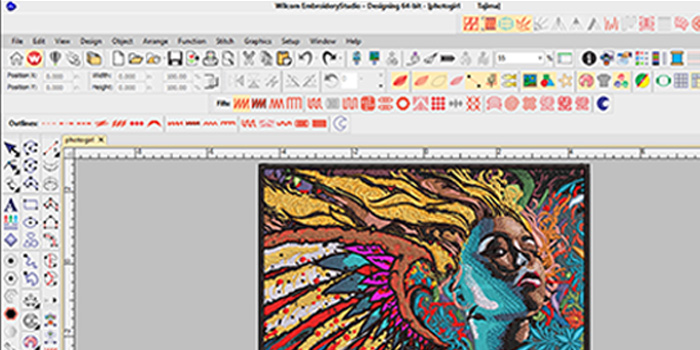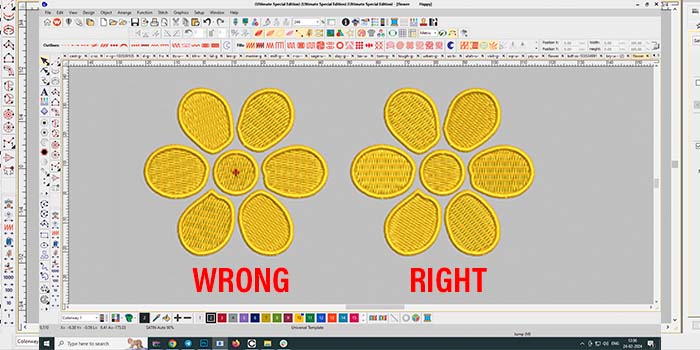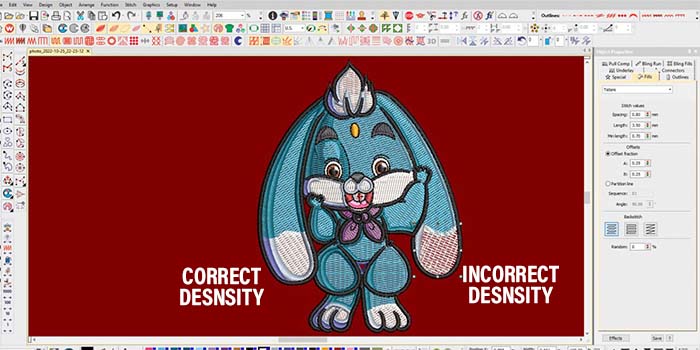Recent advancements in digitizing software have simplified embroidery digitizing to the next level. Given the fact that the digitizing mechanism in embroidery is a complex thing that involves a plethora of fundamentals, mere advancements could not annihilate the complexities involved in digitizing mechanisms. This is the process that a digitizer has to learn through hours of practice and experience.
The Significance Of Embroidery Digitizing

Embroidery digitizing is a procedure that involves the conversion of an embroidery design or an image into a digital file that can be interpreted by a modern embroidery machine. A digitized file is a set of instructions that allows an embroidery machine to stitch a design onto various types of clothing. This is a relatively new process that produces amazing results when skills sync with specified software.
Mistakes That Affect The Quality Of Digitizing Adversely
Digitizing is a highly detailed process in which a digitizer needs to be meticulous about every aspect of the process. A digitizer has to consider every aspect of the design before embroidery digitizing. Newbie digitizers with limited knowledge about the process are more likely to make certain mistakes frequently in the digitizing process. Here are the 12 most common mistakes that beginners make in embroidery digitizing.
1. Improper Planning
A detailed plan is a must before starting a new embroidery digitizing project. It has frequently been observed that the majority of inexperienced digitizers skip the planning part and as a result, they end up with messy and poor designs.
To bring excellence in embroidery artwork, a digitizer must first understand the requirements of the particular digitizing project and then plan accordingly. The digitizer must first analyze the nature of the artwork, which includes outlining, resizing as well as determining the best stitching sequence for the size and type of fabric.
2. Neglecting The Fabric Details

Choosing the right fabric for machine embroidery designs is crucial. Some of the most commonly used woven fabric types are quilter’s cotton, terrycloth, hanky linen, linen, silk, and knitted fabric types such as fleece, lycra, etc, and on each type of fabric, an embroidery machine stitches differently.
Additional fabric details such as the texture, content of the fabric, weave, and weight of the fabric are vital to consider before digitizing a design. Based on the details of the fabric, the digitizing has to be adjusted. Often, new digitizers neglect the details of the fabric, which affects the final embroidery product.
3. Wrong Stitch Direction

This is the most common blunder that embroidery digitizers make. Choosing the wrong stitch direction is likely to harm the stitch angle, impacting the overall appearance of the final embroidery product. You must understand the type of product on which you are working and be careful to avoid misinterpretations.
4. Inaccurate Uses Of Underlay Stitches
It is vital to use the right underlay stitches, especially when using multiple garment types like fleece, wool, and corduroy. Underlay stitches create a smooth surface on which a machine can embroider directly, preserving the quality of overall embroidery. In addition to quality aspects, an appropriate number of stitches also makes sure the garment remains stable.
From the standpoint of a beginner, this is the most difficult thing you have to learn. You should invest some time in learning to determine which underlay type is best for the stitch type. The more you practice digitizing, the better you will become in this aspect.
5. Wrong Fill Type
Fills are important in embroidery digitizing as they bring visual variations to the designs. A novice digitizer must have a good understanding of the various fill types and how they create effects on the embroidery designs. Knowing which fill types to use helps elevate the quality of the embroidery.
6. Incorrect Density

Erroneous understandings of density ruin designs and could cause a lot of problems for embroidered products. Being too thin or too thick is a sign of trouble, as both harm the final product's quality. Many newcomers frequently use incorrect density in the digitizing process; this is a huge blunder.
7. Incorrect Length Of The Stitch
It is very important to use the correct stitch length, as this can cause the underlay to stick out from the sides of the letters that you are using in embroidery digitizing, and the issue gets worse with small letters. This lowers the overall design quality and is also the cause of many other issues. Hence, it is vital to use the correct length of the stitch to finish digitizing properly.
8. Wrong Design Application
Often, newcomers fail to understand the proper applications of embroidery digitizing. This is one of the most common issues associated with embroidery digitizing and a digitizer must take the necessary steps to resolve it.
Understanding the key aspects and applications of the embroidery digitizing process such as colour selection, proper punching, and design size is imperative and minor misunderstandings of any of these could lead to disaster in the final output. It is also important to use the proper stitch type to achieve the desired results.
9. Neglecting The Significance Of Sewing Out From The Centre
When it comes to digitizing products such as hats, it is important to know the requirements of the materials you are going to work with. Sewing from the center is a crucial aspect off getting the right push in each direction for a great finish.
10. Neglecting Digitizing Aspects
There is a very high probability of mistakes in embroidery digitizing designs, especially on products like hats and band t-shirts. This is primarily due to push and pull compensation that can take place if a flat frame is different from the curved substrate. Overlooking the difference could cause a blunder in embroidery digitizing.
Conclusion
With the growth of the textile and fashion industries, the demand for outsourcing embroidery digitization services is also burgeoning. If you look at the embroidery industry, you will notice that thousands of inexperienced digitizers have been hired to create efficiency that syncs with demand in the industry. However, the outcomes have not met expectations due to frequent errors made during the digitizing process, particularly by newcomers. It is time to ratify the aspects that are incorrectly followed in embroidery digitizing. Preventive measures and precautions are key to averting negligence and minimizing production delays and losses in the embroidery digitizing business.




